Content
Proche media was founded in Jan 2018 by Proche Media, an American media house. We invite all industry experts, PR agencies, research agencies, and companies to contribute their write-ups, articles, blogs and press release to our publication. We have a worldwide readership on our website and followers on our Twitter handle.

An Internet of Things platform monitors and manages various IoT endpoints. IoT connects devices and sensors for seamless functioning and improved operations. An IoT platform connects the sensors to data networks, providing insights into the data gathered, deploying applications, and executing sensor management. Most IoT platforms include components for data storage, device management, and data science/information analytics. In the future, the Internet of things may be a non-deterministic and open network in which auto-organized or intelligent entities and virtual objects will be interoperable and able to act independently depending on the context, circumstances or environments. Autonomous behavior through the collection and reasoning of context information as well as the object’s ability to detect changes in the environment and introduce suitable mitigation measures constitutes a major research trend, clearly needed to provide credibility to the IoT technology.
Infrastructure Applications
In contrast, decentralized IoT attempts to divide IoT systems into smaller divisions. The head node authorizes partial decision making power to lower level sub-nodes under mutual agreed policy. Performance is improved, especially for huge IoT systems with millions of nodes. The integration of smart devices in the built environment and how they might be used in future applications. The concept of the «Internet of things» and the term itself, first appeared in a speech by Peter T. Lewis, to the Congressional Black Caucus Foundation 15th Annual Legislative Weekend in Washington, D.C, published in September 1985. According to Lewis, «The Internet of Things, or IoT, is the integration of people, processes and technology with connectable devices and sensors to enable remote monitoring, status, manipulation and evaluation of trends of such devices.»

These home systems use assistive technology to accommodate an owner’s specific disabilities. Voice control can assist users with sight and mobility limitations while alert systems can be connected directly to cochlear implants worn by hearing-impaired users. They can also be equipped with additional safety features, including sensors that monitor for medical emergencies such as falls or seizures. Smart home technology applied in this way can provide users with more freedom and a higher quality of life. Cloud hyperscalers are capturing an increasing amount of platform revenue as well as compute infrastructure revenue by providing IaaS for other platform providers moving their offerings to the cloud. Another category of IoT platforms are the so-called IoT network provider platforms with vendors such as AT&T, Orange Business Services, Telefónica, Verizon, and Vodafone.
What Are The Benefits Of Iot For Business?
IoT platforms enable to realize IoT projects and build IoT solutions faster, cheaper and better. Their essential features/capabilities are on the level of connectivity and network management, device management, data acquisition, processing analysis and visualization, application enablement, integration and storage. AWS IoT includes services like security, data encryption, and access control to device data.
For example, wireless connectivity for IoT devices can be done using Bluetooth, Zigbee, Z-Wave, LoRa, NB-IoT, Cat M1 as well as completely custom proprietary radios – each with its own advantages and disadvantages; and unique support ecosystem. Some scholars and activists argue that the IoT can be used to create new models of civic engagement if device networks can be open to user control and inter-operable platforms. Philip N. Howard, a professor and author, writes that political life in both democracies and authoritarian regimes will be shaped by the way the IoT will be used for civic engagement. For that to happen, he argues that any connected device should be able to divulge a list of the «ultimate beneficiaries» of its sensor data and that individual citizens should be able to add new organisations to the beneficiary list. In addition, he argues that civil society groups need to start developing their IoT strategy for making use of data and engaging with the public. The original idea of the Auto-ID Center is based on RFID-tags and distinct identification through the Electronic Product Code.
Optical Character Recognition Technology For Business Owners
Again, this drives market, go-to-market and ecosystem/partnership and M&A evolutions and these are important to consider when selecting an IoT platform as we’ll see. Expert insights and strategies to address your priorities and solve your most pressing challenges. Learn more about Infrastructure-as-a-Service , Platform-as-a-Service , and Software-as-a-Service as they relate to cloud computing. The Internet of Things, or IoT, is about extending digital transformation to the physical world.
The entrance of the cloud hyperscaler giants into the market in early 2016 provided validation that the IoT platform market opportunity was real. The entrance also led to the emergence of new pricing and revenue strategies for new and existing IoT platform vendors. Comparing what we “knew” back in 2016 to what we know today provides some clues as to why the market exceeded expectations so much. 5 years ago, no one really knew what an IoT platform was, let alone how big the market would be, which business models would work, how architectures would evolve, and which companies/industries would adopt them. The only thing that was “known” was that the IoT platforms market was a billion dollar “blue ocean” opportunity ready to be captured by innovative companies.
Supply chain managers make informed predictions through smart routing and rerouting algorithms. Smart home devices are mainly focused on improving the efficiency and safety of the house, as well as improving home networking. Devices like smart outlets monitor electricity usage and smart thermostats provide better temperature control. Hydroponic systems can use IoT sensors to manage the garden while IoT smoke detectors can detect tobacco smoke. Home security systems like door locks, security cameras, and water leak detectors can detect and prevent threats, and send alerts to homeowners. Because IoT is a system of systems—a network of devices and software applications—rarely does an organization have expertise across all the relevant domains.
The variety of types of IoT platforms, as well as their backgrounds/origins and how they work together in ecosystems matter so let’s first add a few more first. Some examples to illustrate this importance of additional technologies and of specific IoT technologies in the evolution of IoT projects and, as a consequence, in the fragmented IoT platform market. Let’s already say the IoT platform has become an important part of IoT and Industrial IoT deployments and that there are several types and vendors with their own focus and go-to-market strategies. The reality is a bit more complex as we’ll see after an overview of the essential capabilities of all IoT platforms and what you, as a potential buyer, should know about IoT platform market evolutions and selection criteria to pick the IoT platform that fits your needs.
- It could recognize that your usual train is cancelled, calculate the driving distance and travel time for your alternative route to work, check the weather and factor in slower travelling speed because of heavy rain, and calculate when it needs to wake you up so you’re not late.
- Others are turning to the concept of predictive interaction of devices, «where collected data is used to predict and trigger actions on the specific devices» while making them work together.
- Many of them clearly are focusing on the use cases, preferences and needs of buyers on various levels, whereby integration is a key one.
- Although device management, data, communications and cloud of course are key, application enablement, edge capabilities, vertical capabilities/support, advanced security and analysis/visualization are simply key in IoT platforms and the communication level is a very heterogeneous one.
- One of the main factors that hindering people from adopting and use Internet of things based products and services is its complexity.
Thanks to the advent of inexpensive computer chips and high bandwidth telecommunication, we now have billions of devices connected to the internet. This means everyday devices like toothbrushes, vacuums, cars, and machines can use sensors to collect data and respond intelligently to users. The Internet of Things strives to connect devices remotely for seamless functioning and ease of operations. An IoT platform bridges the gap between device sensors and data networks. An IoT platform is a set of components that allows developers to spread out the applications, remotely collect data, secure connectivity, and execute sensor management.
What they are, why there are so many, when businesses should use them, and the important considerations when choosing between the many options. Many of the IoT platforms on the market today handle bits and pieces of all three types—and this is both good and bad. With development, the cost of integration, and the cost of hiring consultants to onboard into the system if you can’t do it yourself—you could be looking at a major expense. It’s critical to be transparent about your budget with your platform provider. The provider wants to make the sale, but if they know you can’t afford certain features, they probably won’t try to push them. A gateway device to aggregate and transmit data back and forth to the data network.
Smart Buildings
This data can be used to automate farming techniques, take informed decisions to improve quality and quantity, minimize risk and waste, and reduce the effort required to manage crops. For example, farmers can now monitor soil temperature and moisture from afar, and even apply IoT-acquired data to precision fertilization programs. The overall goal is that data from sensors, coupled with the farmer’s knowledge and intuition about his or her farm, can help increase farm productivity, and also help reduce costs. The IoT can assist in the integration of communications, control, and information processing across various transportation systems. Application of the IoT extends to all aspects of transportation systems (i.e. the vehicle, the infrastructure, and the driver or user). Dynamic interaction between these components of a transport system enables inter- and intra-vehicular communication, smart traffic control, smart parking, electronic toll collection systems, logistics and fleet management, vehicle control, safety, and road assistance.
Sensor-driven analytics and robotics increase efficiency inautomobile manufacturingand maintenance. For example, industrial sensors are used to provide 3D real-time images of internal vehicle components. Diagnostics and troubleshooting can be done much faster while the IoT system orders replacement parts automatically. This is a device, like https://globalcloudteam.com/ a television, security camera, or exercise equipment that has been given computing capabilities. It collects data from its environment, user inputs, or usage patterns and communicates data over the internet to and from its IoT application. As always, it’s probably a mix of the two, but I believe that the first explanation is more compelling.
What Is Enterprise Ai
This attack is executed through a botnet consisting of a large number of IoT devices including IP cameras, gateways, and even baby monitors. Power-line communication – Communication technology using electrical wiring to carry power and data. Specifications such as HomePlug or G.hn utilize PLC for networking IoT devices.
IoT Analytics is a leading provider of strategic IoT market insights and a trusted advisor for 800+ corporate partners worldwide. The correct answer to each of those questions will vary for every organization and be further complicated by uncertainty around other developing trends such as the adoption of multi-cloud setups and the emergence of IoT platform marketplaces. 5 years ago, when we forecasted that the IoT platforms market would have a 5-year compound annual growth rate of 35%, we wondered if our growth projection was unrealistically high.
Drive your innovation into the future with our best-in-class IoT solutions. Discover why we’re recognized by Frost & Sullivan as the 2021 Company of the Year for Global Cellular IoT. Now, we’d like to introduce people to the underlying platforms we’ve deployed to work with CarForce and others.
Selecting An Iot Platform: Business
Additionally, it’s important to talk about the role these platforms play in the broader ecosystem. Platforms that will save money might be more difficult to integrate upfront. Business model—so ask the questions early, before you select a provider. If you have a subscription model with a lower upfront cost, you may want to wrap the IoT service charge into your customer’s subscription costs. An overall view of the market identifies historical and projected market sizes, and an analyst opinion on market growth is provided.
MachNation is one of many who studies the IoT platform market with its annual ScoreCards. According to MachNation, total IoT platform revenue will reach USD3.3 billion in 2018, a growth of 89 percent in comparison with 2017. The categories which MachNation uses for its test and rankings are divided into several subcategories where performance is gauged. As mentioned in an article on the MachNation 2018 IoT AEP ScoreCard, the MachNation MIT-E test lab for IoT platforms looks at several IoT platform test categories from the perspective of performance and overall evaluation. As explained in an article on the role of IoT platforms, in the strict sense an IoT platform is an IoT Application Enablement Platform or AEP.
IoT device platforms provide hardware building blocks for developing IoT devices. And considering that hardware is usually the “long pole in the tent” for IoT product development, it is important to consider what already exists in the market to accelerate your efforts. Instead of you contracting with multiple carriers, connectivity platforms provide a single interface for deploying, monitoring, and managing all your devices around the world. These platforms often include additional functionality such as traffic monitoring, connectivity management, geolocation, device management, over-the-air updates, and device provisioning. This category of IoT platforms provides the core building blocks for your product, including consuming, transporting, storing, analyzing, and displaying data. As the name implies, their aim is to enable the rapid development of your application by abstracting the complexities of building an IoT solution.
The possible means of real-time monitoring for reducing energy consumption and monitoring occupant behaviors. I’m curious why you left the SAP’s Leonardo platform out of your list of top platforms – it ticks all the boxes you mention . In my IoT PM certificate program, I do cover what comprises an IoT platform Definition of an IoT platform as well as the criteria to drive the vendor selection and build vs buy processes. Even if you are able to pull off the enormous technical challenge, in the end, you’ll have something that’s not core to your strategy, is not differentiated, and is probably 2–5 years behind where the industry is today.
